
 Data Structure
Data Structure Networking
Networking RDBMS
RDBMS Operating System
Operating System Java
Java MS Excel
MS Excel iOS
iOS HTML
HTML CSS
CSS Android
Android Python
Python C Programming
C Programming C++
C++ C#
C# MongoDB
MongoDB MySQL
MySQL Javascript
Javascript PHP
PHP
- Selected Reading
- UPSC IAS Exams Notes
- Developer's Best Practices
- Questions and Answers
- Effective Resume Writing
- HR Interview Questions
- Computer Glossary
- Who is Who
What frameworks are used to make applications in Python?
In this article, we will discuss frameworks used to make applications in Python.
Python is experiencing an amazing growth trend. And there is no indication of a slowing in the near future.
Artificial intelligence, smartphones, supercomputers, and other similar technology are forever changing our world. We can build a variety of mobile apps and programs in the languages that such technology supports. Python is one of the most widely used programming languages.
According to Stack Overflow's developer review, Python was the most popular language in 2018, beating C# and PHP. Python's growth implies that it has evolved into a high-level platform, with 93,197 great enterprises.
Python beats other languages due to its maturity, better libraries, and appropriateness for both small and large web development projects. Python engineers are in high demand across a wide range of industries, including machine learning, databases, cloud infrastructure, UI/UX design, data analysis, web scraping, security, mobile development, and APIs, to name a few.
The Python platform is mostly used for data analysis and web development.
Popular Python Frameworks
The following are some of the popular frameworks of python:
Django
Django is a free and open-source Python framework, that allows developers to fastly create complex code and apps. The Django framework aids in the development of high-quality web applications. It is one of the greatest Python frameworks for the rapid creation of APIs and web applications.
The Django framework has been used to create over 12,000 well-known projects. Furthermore, it is one of the more experienced Python web development frameworks.
This high-level framework simplifies web application development by providing a variety of powerful features. It features a massive library collection and emphasizes effectiveness, less coding, and component reusability.
Features
Helps you in defining patterns for your app's URLs.
Inbuilt authentication system
URL system that is both simple and powerful.
Object-oriented programming language database with the best data storage and recovery capabilities.
The automatic admin interface feature allows for the customization of editing, adding, and deleting items.
A cache framework is a collection of cache mechanisms.
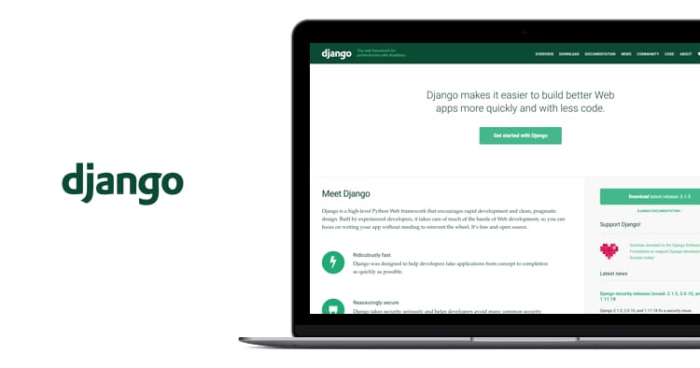
Grok
Grok is a web framework built with the Zope toolkit technology. It provides developers with an agile development experience by focusing on two main principles: convention over configuration and DRY (Don't Repeat Yourself). It is an open-source framework designed to accelerate application development.
Grok Developers can select from a large range of network and standalone libraries based on the task requirements. Grok's user interface (UI) is similar to those of other full-stack Python frameworks such as Pylons and TurboGears.
Features
Provides a solid foundation for building powerful and extensible web applications.
Allows web developers to take advantage of Zope 3's power.
A robust object database for storage.
Integrated security to protect your application and grant specific users access
Grok component architecture assists developers in reducing development unpredictability.
Provides the building blocks and other assets required to create custom web applications for business needs.
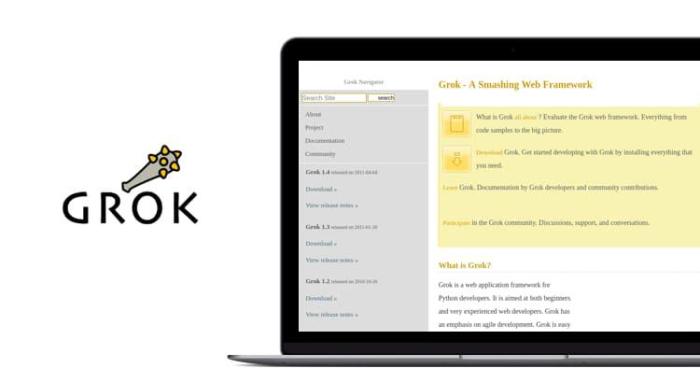
BlueBream
BlueBream is also an open-source web application framework, server, and website development library. It was created by the Zope team and was previously known as Zope 3.
This framework is best suited for medium and large-scale operations that are divided into re-usable and well-adapted pieces.
Zoop Toolkit is used by BlueBream (ZTK). It has vast experience, ensuring that it meets the primary requirements for long-lasting, consistent, and adaptive programming.
Features
Python Web Server Gateway Interface (WSGI) compatibility is emphasized.
Frameworks for unit and functional testing
The fundamental mechanism for plugged security methods.
A template development language that is XHTML compliant.
A program that generates forms automatically
The Zope Component Architecture (ZCA) implements the separation of concerns in order to create robust reusable components.
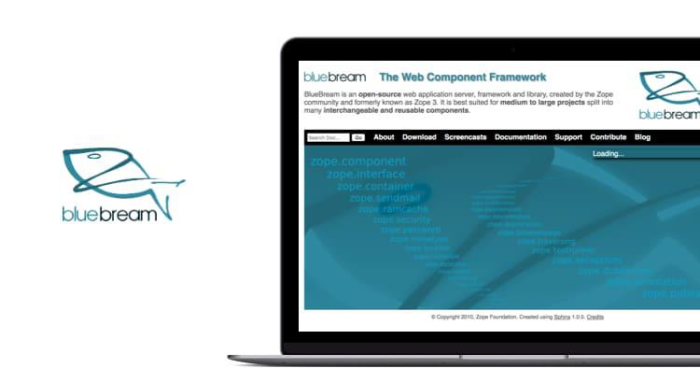
TurboGears
TurboGears is a Python framework for building data-driven full-stack web applications. It is designed to fix the issues of numerous widely used web and mobile app development frameworks. It enables software developers to begin designing web applications with minimal setup.
TurboGears allows web developers to use several JavaScript development tools to speed up Python website development. With the help of features like as SQLAlchemy, Repoze, WebOb, and Genshi, you may build web applications considerably faster than with other existing frameworks. It works with a variety of databases and web servers, including Pylons.
The framework follows to an MVC (Model-View-Controller) design and features robust formats, a fantastic Object Relational Mapper (ORM), and Ajax for the server and program. Companies that use TurboGears include Bisque, ShowMeDo, and SourceForge.
Features
All of the features are implemented as function decorators.
Support for multi-database.
Command-line tools are accessible.
Integration of the MochiKit JavaScript library.
MVC architecture plus PasteScript templates
ToscaWidgets to make it easy coordinate frontend design and server deployment.
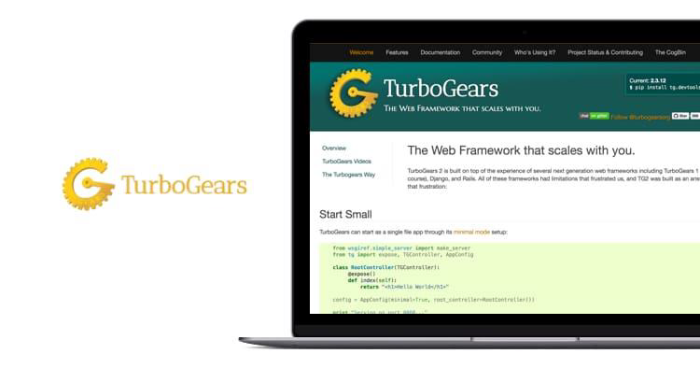
Web2py
Web2py is a Python-based platform for creating dynamic web content. The technology has included a code editor, debugger, and deployment tools from its initial release in 2007. Web2py is a Python library that allows you to create dynamic web content.
Features
Supports configuration agreement and enables rapid web development.
Supports MVC architecture to make web development easier.
Allows developers to use widely used relational and NoSQL databases.
Web-based IDE for web development projects such as cleaning temporary files, editing app files, running tests, and browsing previous tickets.
It includes Useful Batteries for quickly building a variety of web apps without the need for third-party tools and services.
Maintains the security of web apps by addressing top vulnerabilities and security issues.
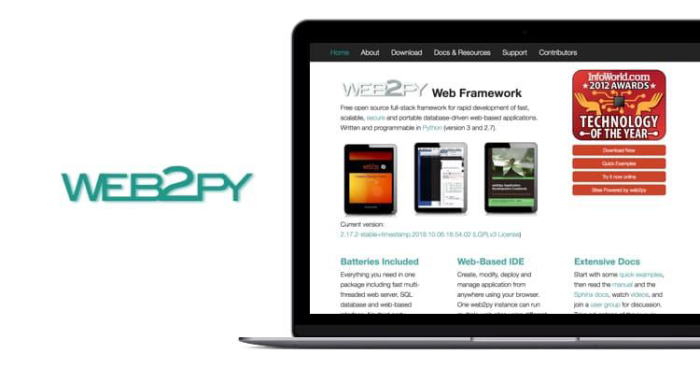
Flask
Flask is a Python framework inspired by the Sinatra Ruby framework that is accessible under the BSD license. Flask is dependent on the Werkzeug WSGI toolbox and the Jinja2 template. The main goal is to assist in the development of a robust web application base.
The Python backend framework can be developed in any way that developers require; however, it was built for open-ended applications. Flask has been employed by large corporations such as LinkedIn and Pinterest. Flask, in comparison to Django, is best suited for tiny and simple projects. As a result, you may predict web server development, Google App Engine support, and built-in unit testing.
Features
In-built development server and debugger.
RESTful request dispatching.
Support for integrated unit testing
Jinja2 templating is used (tags, filters, macros, and more).
100% WSGI 1.0 compliant.
The community has created numerous extensions to help with the introduction of new functionality.
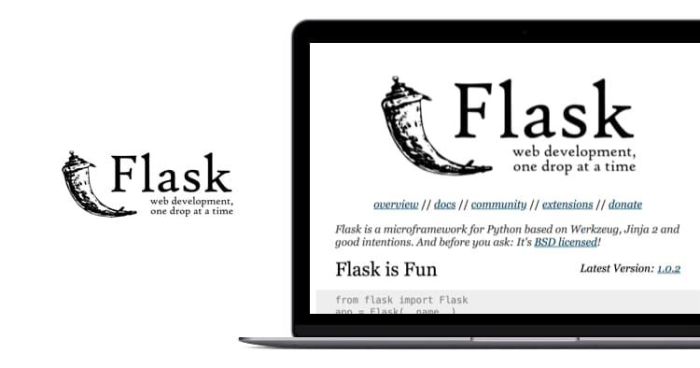
Bottle
The bottle is a WSGI microweb framework, which means it is a single file with no dependencies other than a distributed module in the Python Standard Library. All of this is included in the framework, as well as request dispatching through URL, key/value databases and templates, and built-in HTTP server support.
Features
The simple syntax allows for spotless and dynamic URL routes for mapping.
Built-in template engine and backing that is quick and pythonic.
It is simple to use the WSGI framework with CGI and the WSGI internals.
Allows for convenient access to data, cookies, file uploads, and other HTTP-related metadata.
Worked as an HTTP server and as a backend for glue, fapws3, flup, or another WSGI-capable HTTP server.
Speed enhancements for testing and high performance.
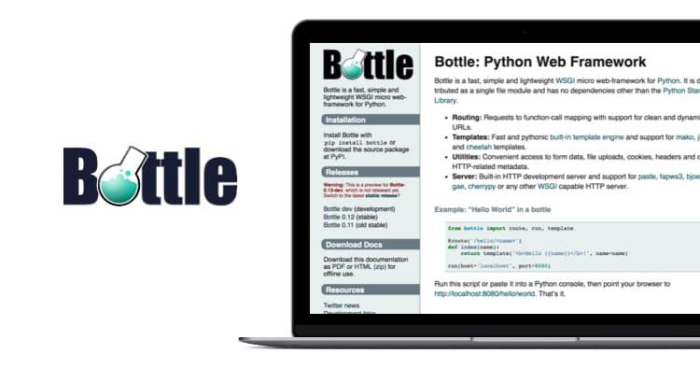
CherryPy
CherryPy, at nearly ten years old, has proven to be incredibly fast and stable. It is a Python web development framework that includes its own multi-hung server. It is compatible with any working framework that supports Python.
A simple web framework enables you to utilize any technology for data access, templating, and so on. Yes, it can handle everything a web framework can, such as sessions, file uploads, static, cookies, and so on.
CherryPy allows developers to create web apps in the same way that they would create any other object-oriented Python program. As a result, lesser source code is created in less time.
Features
A WSGI thread-pooled webserver that is HTTP/1.1 compliant.
It is simple to run multiple HTTP servers (for example, on multiple ports) at the same time.
Python 2.7+, 3.5+, PyPy, Jython, and Android are supported.
Encoding, sessions, caching, authentication, static content, and many other features are built in.
A robust configuration system for both developers and deployers.
Profiling, coverage, and testing are all built-in.
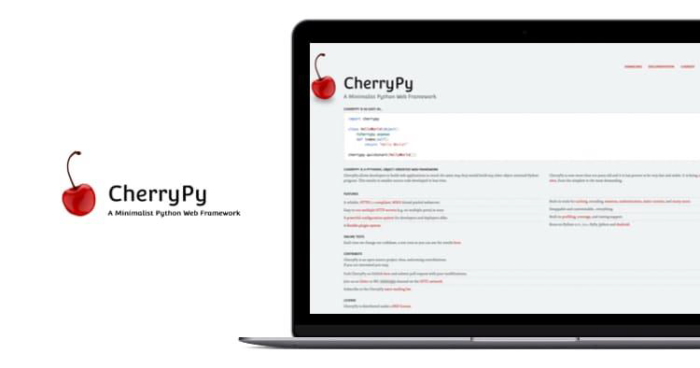
Pyramid
Pyramid's popularity is steadily increasing. The majority of experienced developers are in favor of it. Pyramid frameworks are written in Python 3. This framework is adaptable and allows users to create simple web apps using a minimalistic approach.
Pyramid frameworks are versatile and may be used for both simple and complex applications. Because of its transparency and measured quality, it is the most valued web framework among experienced Python developers. It has been adopted by technology giants such as Mozilla, Yelp, Dropbox, and SurveyMonkey.
Features
Capability to work well with both small and large applications
URL mapping based on Routes configuration via URL dispatch and HTML structure validation and generation by WebHelpers
Complete templating and asset details
Testing, support, and detailed data documentation
Authentication and approval are both flexible.
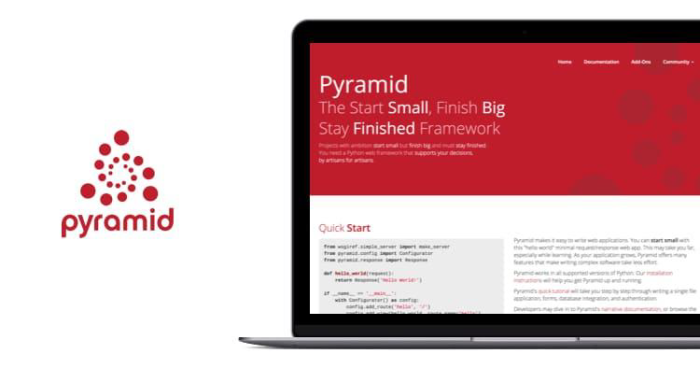
Conclusion
In this article, we learned about some of the frameworks that are used to develop Python applications. We also learned about the features of the same.

